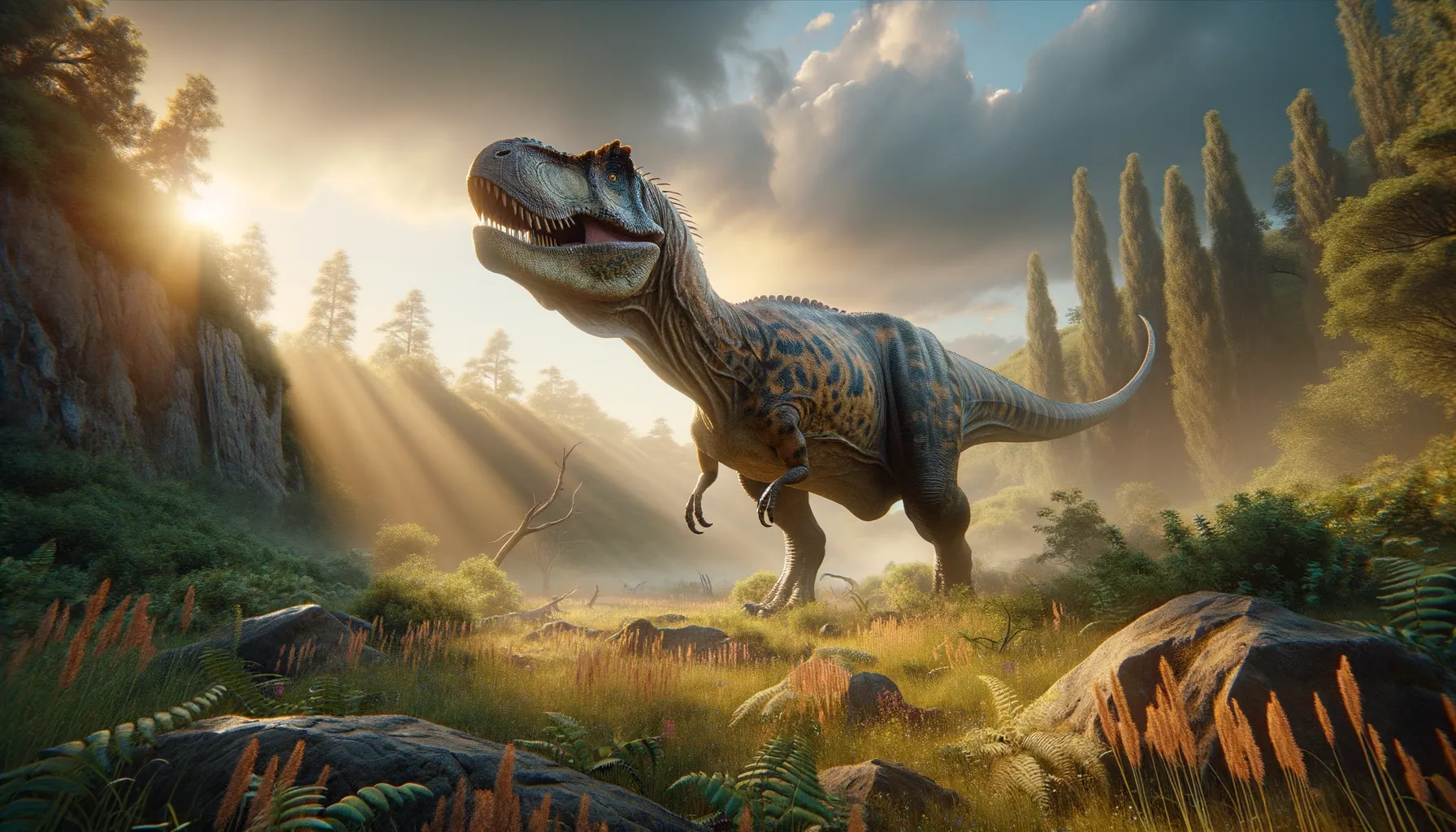
Edmarka
A silent predator of the Jurassic shadows.
Period
triassic
Length
Estimated to be about 10 meters long.
Height
Roughly 2 to 3 meters at the hip.
Weight
Approximately 1 to 2 tons.
Edmarka is a genus of large theropod dinosaur that lived during the Late Jurassic period. It was initially identified from partial remains in North America and is believed to have been a formidable predator in its ecosystem. While not much is known about this dinosaur due to the limited fossil evidence, it is considered to be closely related to other large theropods like Torvosaurus. Its fossils provide crucial insights into the diversity of predatory dinosaurs during the Jurassic.
Diet
Edmarka was carnivorous, likely preying on large herbivorous dinosaurs of its time. Its strong jaws and sharp teeth suggest an adaptation to hunting and consuming large prey.
Hunting
As a formidable predator, Edmarka probably used stealth and strength to ambush or overpower its prey. Its physical build suggests it was capable of taking down sizable herbivores, contributing to its role as an apex predator.
Environmental challenges
Living during the Late Jurassic, Edmarka faced challenges such as competition with other large predators, fluctuating climate conditions, and the need to secure ample food sources. The ecosystem was dynamic, requiring adaptability to varying prey availability. The competition for resources was intense, with numerous other theropods inhabiting the same regions. Additionally, changes in vegetation and occasional climate shifts may have influenced its hunting habits.
Speed
Estimated to be a swift runner, but exact speeds are unknown.
Lifespan
Likely lived for several decades, typical for large theropods.
First discovery
Discovered in the Morrison Formation, Colorado, 1992.
Fun Facts
- Edmarka was a large theropod dinosaur that lived approximately 150 million years ago during the Late Jurassic period.
- The name Edmarka comes from Edmarka rex, named to honor the fossil hunter, Mark A. Norell.
- Edmarka is believed to have been a predator that could reach lengths of up to 36 feet, making it one of the larger carnivores of its time.
- Fossils of Edmarka were discovered in the Morrison Formation in Wyoming, USA, a site famous for its rich dinosaur deposits.
- Although initially thought to be a unique genus, some scientists suggest Edmarka might be a large species of Torvosaurus.
- Like many theropods, Edmarka walked on two legs and had sharp claws and teeth designed for hunting.
- The discovery of Edmarka has helped paleontologists understand more about the diversity of predatory dinosaurs in the Jurassic ecosystem.
Growth and Development
Edmarka, like many theropods, underwent significant growth phases, starting small and reaching massive sizes over several years. The juvenile stages would have been vulnerable to predation, necessitating rapid growth rates. Understanding its development helps scientists piece together growth patterns and life-history traits distinctive to large theropods. Bone histology suggests it reached maturity rapidly, a common trait among large predators to outgrow potential threats.
Habitat
Edmarka inhabited floodplains, forests, and riverine areas of the Morrison Formation, characterized by wet and dry seasonal cycles. These diverse environments provided abundant resources but also challenges in terms of territory and survival. Dense vegetation offered hiding spots for predators and prey alike, creating a complex predator-prey dynamic. Its presence in these habitats indicates adaptability to both open plains and densely wooded areas, crucial for its hunting strategies.
Interaction with other species
Edmarka shared its habitat with other large dinosaurs like sauropods, creating complex ecological interactions. It may have competed with other theropods for prey, engaging in territorial disputes. The presence of numerous herbivores provided ample food, influencing its hunting and social behavior. Occasionally, it might have scavenaged carcasses, interacting indirectly with scavengers and other carnivores.
Natural lifespan
Its natural lifespan was likely similar to that of large modern reptiles, potentially reaching 30 to 40 years.
Reproduction
Edmarka likely reproduced by laying eggs, with nests possibly located in secure areas to protect from predators. As a theropod, it might have exhibited some form of parental care, perhaps guarding or tending to its nest. Reproductive strategies would have included selecting mates and ensuring offspring survival amidst numerous environmental threats.
Social behaviour
Edmarka's social behavior is speculative, but it's possible that it was solitary or formed loose aggregations only for breeding. Limited social interaction may have been the result of its status as a top predator, reducing the need for group dynamics. Some theropods are known to have engaged in group hunting or communal nesting, though evidence for Edmarka is not definitive.
Fossil locations
Fossils of Edmarka have been primarily discovered in the Morrison Formation of North America. Its remains are fragmentary, making it difficult to reconstruct the full anatomy. Despite this, the known fossils provide glimpses into its role as a dominant predator of its era. The Morrison Formation is a rich fossil site, offering diverse dinosaur remains from the Late Jurassic.
